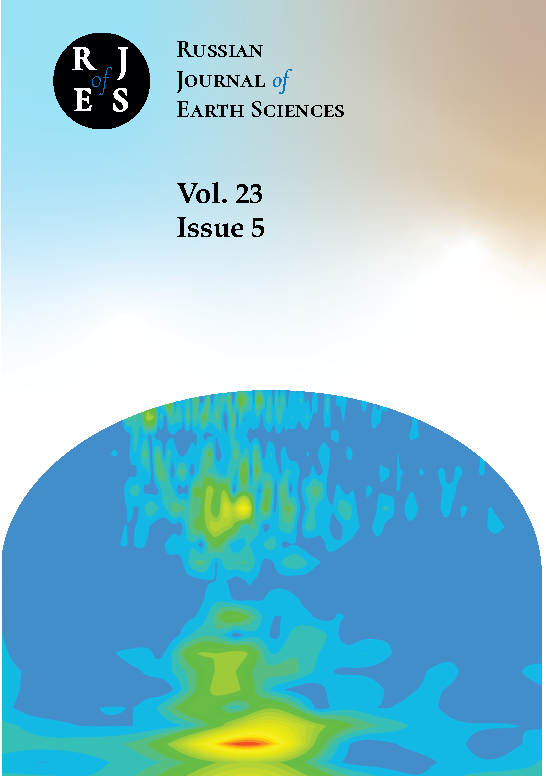Russian Federation
Russian Federation
UDC 55
CSCSTI 37.00
CSCSTI 38.00
BISAC SCI SCIENCE
This paper discusses several extremely promising applications of multi-cloud solutions that can help achieve environmental protection and sustainability goals, provide ecological benefits, and aid wildlife research, conservation and protection. The widespread adoption of multi-cloud strategies helps illustrate the range of initiatives and approaches to reduce environmental burdens employed by government agencies, non-governmental organizations, and private companies.
environmental protection; multi-cloud computing; multi-cloud platforms
1. Al-Bdairi, G. A. H. (2022), “Multicloud” as a key to the benefits, in Modern trends in the development of science and the world community in the era of digitalization: Proceedings of the V International Scientific and Practical Conference Moscow, March 11, 2022, pp. 82-91, Alef Printing House, Moscow (in Russian).
2. Amazon Web Services (2023), AWS Disaster Response, https://aws.amazon.com/ru/government-education/nonprofits/disaster-response/, (date of access: 04/04/2023).
3. Aquatic Informatics ULC (2023), Aquatic Informatics, https://aquaticinformatics.com, (date of access: 04/04/2023).
4. Bluefield (2023), We believe that water is the most pressing issue facing our generation, https://www.bluefieldresearch.com, (date of access: 04/04/2023).
5. Climate FieldView (2023), Digital Farming’s Leading Software Platform, https://climate.com, (date of access: 06/04/2023).
6. Climate Group (2023), Driving climate action, https://www.theclimategroup.org, (date of access: 06/04/2023).
7. Descartes Labs (2023), Natural Disaster Prediction and Monitoring. Wildfires, https://descarteslabs.com/climatesolutions/natural-disaster, (date of access: 08/04/2023).
8. Dovgal, V., and S. Kuizheva (2022), Using Big Data Technology to Protect the Environment, Russian Journal of Earth Sciences, pp. 1-5, https://doi.org/10.2205/2022ES01SI02. EDN: https://elibrary.ru/YHQJUA
9. Dovgal, V. A., and D. V. Dovgal (2019a), A survey of the integration possibilities of cloud computing and Internet of things, Vestnik of Adygeya State University. Series 4: Natural-mathematical and technical sciences, 4(251), 81-86 (in Russian).
10. Dovgal, V. A., and D. V. Dovgal (2019b), The use of the Internet of Things for environmental protection, in Fundamental and applied aspects of geology, geophysics and geoecology using modern information technologies. Proceedings of the V International Scientific and Practical Conference, pp. 152-157, Maykop State Technological University, Maykop (in Russian).
11. Echologics a Mueller brand (2023), Built to protect water networks, https://www.echologics.com, (date of access: 04/04/2023).
12. ESRI (2023), Geospatial Intelligence. Thrive in an Ever-Shifting World, https://www.esri.com/content/dam/esrisites/enus/media/ebooks/geospatial-intelligence.pdf, (date of access: 08/04/2023).
13. Everstream Analytics (2023), Risk Center, https://www.everstream.ai/risk-center/, (date of access: 05/04/2023).
14. EXCI (2023), Smoke alarm for the bush, https://www.exci.ai, (date of access: 08/04/2023).
15. Google Earth Engine (2023), A planetary-scale platform for Earth science data & analysis, https://earthengine.google.com, (date of access: 08/04/2023).
16. GOST ISO/IEC 17788-2016 (2016), Information technology. Cloud computing. Overview and vocabulary (in Russian).
17. IBM (2015), Weather for Emergency Management, a cloud-based weather data service, enables Smarter Cities Emergency Management users to enrich their emergency management solutions with weather-based insights, https://www.ibm.com/docs/en/announcements/archive/ENUSZP15-0071, (date of access: 05/04/2023).
18. Jupiter (2023), The Trusted Leader In Climate Risk Analytics, https://www.jupiterintel.com, (date of access: 06/04/2023).
19. Microsoft (2023), A Planetary Computer for a Sustainable Future, https://planetarycomputer.microsoft.com, (date of access: 05/04/2023).
20. One Concern (2023), Digital Infrastructure of the Physical World, https://www.oneconcern.com/en/, (date of access: 05/04/2023).
21. PON Ricerca (2021), The National Operational Programme on Research and Innovation 2014-2020, http://www.ponricerca.gov.it/pon-ricerca/programme/, (date of access: 04/04/2023).
22. Resolve TrailGuard AI (2023), Stopping poachers and protecting parks and communities, https://www.resolve.ngo/trailguard.htm, (date of access: 05/04/2023).
23. Seto, J. (2018), Using AI and IoT for disaster management, https://azure.microsoft.com/es-es/blog/using-ai-and-iot-fordisaster-management/, (date of access: 04/04/2023).
24. Stecca, G., A. Puliafito, M. Simonetti, G. Mariotta, and P. Sciuto (2016), A Cloud-based System to Protect Against Industrial Multi-risk Events, Procedia CIRP, 41, 650-654, https://doi.org/10.1016/j.procir.2015.12.093.
25. Wildlife Insights (2023), Bringing Cutting-Edge Technology to Wildlife Conservation, https://www.wildlifeinsights.org, (date of access: 06/04/2023).
26. WildTrack (2023), Non-Invasive Wildlife Monitoring, https://wildtrack.org, (date of access: 05/04/2023).















